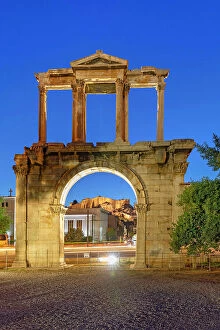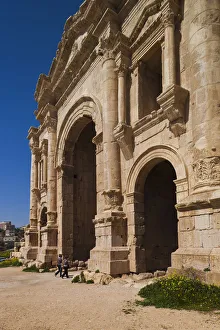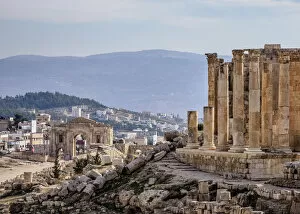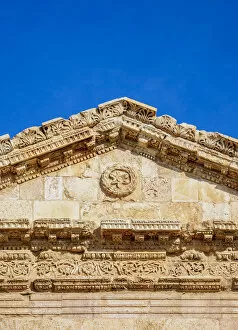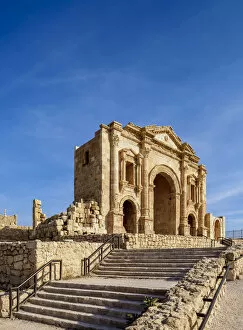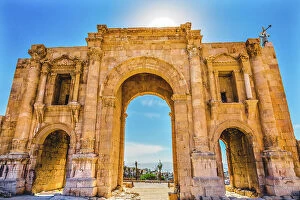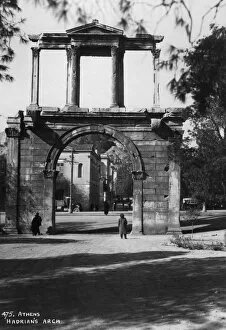Hadrians Arch Collection
Hadrian's Arch, located in Jerash, Jordan, is a remarkable testament to the Roman era that spanned from 300 BC to 600 AD
All Professionally Made to Order for Quick Shipping
Hadrian's Arch, located in Jerash, Jordan, is a remarkable testament to the Roman era that spanned from 300 BC to 600 AD. This iconic arch stands tall and proud, serving as a gateway to the ancient city of Jerash. As you gaze upon this architectural marvel, you can't help but be transported back in time. The Great Temple of Zeus looms majestically beside Hadrian's Arch, creating an awe-inspiring sight that showcases the grandeur of ancient Jerash. A closer look at Hadrian's Arch reveals intricate details that have withstood the test of time. Every curve and carving tells a story of its own, showcasing the craftsmanship and skill of those who built it centuries ago. Although there are other versions of Hadrian's Arch scattered across different locations like Athens and Greece, this particular one in Jerash holds its own unique charm. It serves as a reminder of Jordan's rich history and cultural heritage. In 1890, Themistocles von Eckenbrecher captured the beauty of Hadrian's Arch through his artwork. His portrayal allows us to appreciate this historical landmark even more deeply. Decades later in 1937, Martin Hurlimann also immortalized Hadrian's Arch through his artistic lens in Athens. These depictions give us glimpses into how this magnificent structure has captivated people throughout various periods. Elevated views offer breathtaking perspectives on both the Temple of Olympian Zeus and the colossal ruined temple alongside Hadrian's Arch in central Athens. These vantage points allow visitors to fully comprehend their sheer size and significance within their respective contexts. Whether you find yourself standing beneath its towering presence or admiring it from afar through photographs or paintings – one thing remains certain: Hadrian’s Arch continues to stand as a symbol not only for architectural brilliance but also for our enduring fascination with history itself.

